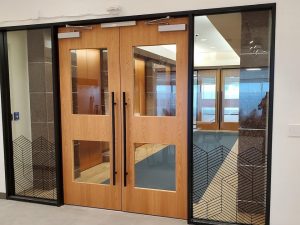- Quality roofing materials enhance the longevity and durability of your roof.
- Proper roofing can improve energy efficiency and reduce utility costs.
- Investing wisely in roofing protects property value and offers peace of mind.
Understanding Roofing Materials
All roofs are not created equal. When protecting your home, the right materials make a significant difference. Quality roofing materials can enhance durability, energy efficiency, and aesthetic appeal. Whether it’s asphalt shingles, metal roofing, or tile, grasping your choices is essential for making well-informed decisions regarding your home’s protection. The selection of roofing material impacts everything from the structural integrity of your home to its exterior appearance.
Various materials provide different degrees of resistance to environmental factors. Asphalt shingles, for example, are popular in sunrooms due to their cost-effectiveness and ease of installation. On the other hand, metal roofs are praised for their longevity and minimal upkeep. By educating yourself on the diverse materials available, you can choose those that align best with your climate, energy needs, and budget requirements.
The Impact Of Quality Roofing On Longevity
Quality roofing materials are typically designed to withstand harsh weather conditions, including heavy rain, windstorms, and UV radiation. This resilience often translates into a longer lifespan and reduced need for repairs. Using top-tier materials can mean the difference between needing a costly roof replacement every 15 years versus every 30 years. Not only does this save money in the long run, but it also keeps your home looking pristine and well-maintained. Homeowners frequently undervalue the significance of putting money into resilient roofing during initial construction or renovations, overlooking the potential long-term savings and hassle avoidance.
Energy Efficiency Gains
Investing in superior roofing materials provides significant energy efficiency gains. Homeowners can effectively reduce heating and cooling costs by selecting better insulation materials. For instance, green roofing solutions have been shown to decrease the urban heat island effect. The proper insulation can drastically improve your home’s temperature regulation, leading to noticeable savings on utility bills.
Moreover, energy-efficient roofing materials can enhance your home’s overall environmental sustainability. Cool roofs are designed to reflect increased sunlight and absorb reduced heat, keeping beekeeping buildings cooler and reducing the need for air conditioning. This adaptation helps save energy and decreases greenhouse gas emissions, contributing positively to the environment.
Boosting Your Home’s Value
A well-maintained roof significantly contributes to your home’s curb appeal, ultimately increasing its market value. Potential buyers often look for a solid, attractive roof when considering a new home purchase, making this an essential investment for homeowners planning to sell. An aesthetically pleasing and sturdy roof offers assurance to prospective buyers and can be one of the deciding factors in a property’s value. Additionally, homes featuring modern and durable roofs often possess an advantage in the real estate sector. Buyers perceive newer, high-quality roofing as reducing future maintenance costs and potential risks, making properties with these features more desirable. This perception can help sellers achieve better selling prices and faster sales times.
Durability & Maintenance
The durability of roofing materials directly influences the level of maintenance required. High-quality options typically provide greater resilience against environmental factors, meaning less time and money spent on repairs. This durability ensures that your roof remains functional and attractive over many years, reducing the stress and cost of frequent maintenance. For instance, metal roofing is known for its capacity to endure severe weather conditions and resist damage from debris, all while requiring minimal maintenance compared to traditional materials. This feature makes it a favored option among those seeking long-term savings and minimal hassle.
Environmental Considerations
When choosing roofing materials, eco-friendly options that minimize environmental impact are worth considering. These materials assist in conserving natural resources and lowering pollution, aligning with sustainable practices. For instance, certain roofing materials and solutions can decrease heat retention and improve energy efficiency in urban areas. Furthermore, incorporating recycled materials in roofing or opting for sustainable production processes can significantly improve a building’s environmental profile. This choice supports global efforts against climate change while maintaining the structural benefits of quality materials.
Checklist For Selecting Roofing Materials
- Assess your local climate conditions to select materials that provide optimal protection.
- Determine your budget and weigh it against potential long-term savings from energy-efficient materials.
- Consider the aesthetic appeal and how well materials match your home’s architecture, ensuring your choice complements your house’s style.
- Evaluate the maintenance requirements and lifespan of the materials you’re considering, particularly how often you’ll need to engage in maintenance services.
- Research and opt for energy-efficient and eco-friendly materials wherever possible, which can reduce utility costs and provide environmental benefits.






Leave a Reply